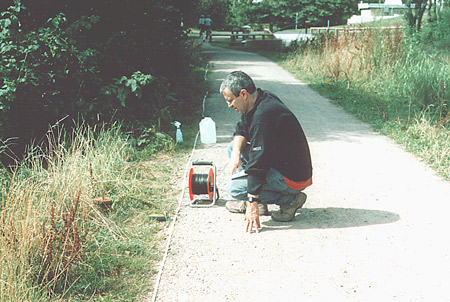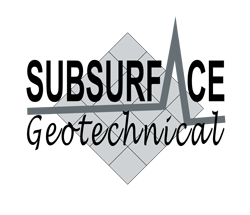

Small currents are naturally produced beneath the Earth's surface. The Self Potential or Spontaneous Potential (SP) geophysical method measures the potential difference produced by the currents, between any two points on the ground surface. The SP method is passive, non-intrusive and does not require the application of an electrical current.
Small potentials of the order of a few millivolts are produced by two electrolytic solutions of differing concentrations being in direct contact, and by the flow of electrolytic fluids through porous materials (streaming potential). Larger ground potentials are produced by conductive mineralised ore bodies that are partially immersed below the water table.

Standard SP surveys utilise non-polarising porous pot electrodes specially adapted to minimise contact voltages. Readings are usually taken with one electrode fixed at a base station and the other 'field' electrode being mobile. Reading stations are spaced at regular intervals in profile lines, closed loops or grid networks depending upon the desired application.
The SP method is traditionally used as a mineral exploration tool and for downhole logging in the oil industry. More recently it has been adapted for hydrogeological and water engineering applications, by the use of more sensitive equipment and the careful application of data correction processes.